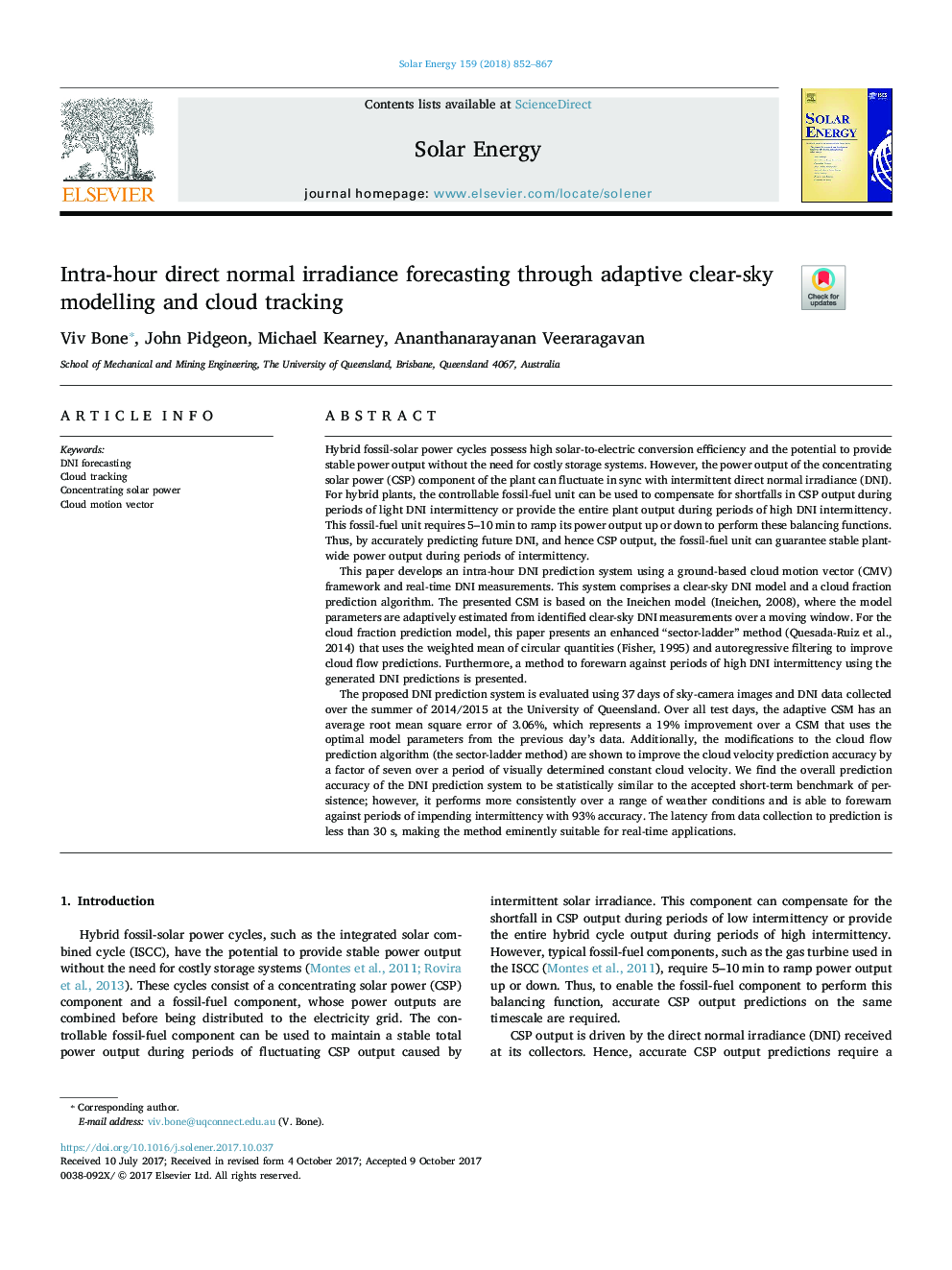| Article ID | Journal | Published Year | Pages | File Type |
|---|---|---|---|---|
| 7936152 | Solar Energy | 2018 | 16 Pages |
Abstract
The proposed DNI prediction system is evaluated using 37â¯days of sky-camera images and DNI data collected over the summer of 2014/2015 at the University of Queensland. Over all test days, the adaptive CSM has an average root mean square error of 3.06%, which represents a 19% improvement over a CSM that uses the optimal model parameters from the previous day's data. Additionally, the modifications to the cloud flow prediction algorithm (the sector-ladder method) are shown to improve the cloud velocity prediction accuracy by a factor of seven over a period of visually determined constant cloud velocity. We find the overall prediction accuracy of the DNI prediction system to be statistically similar to the accepted short-term benchmark of persistence; however, it performs more consistently over a range of weather conditions and is able to forewarn against periods of impending intermittency with 93% accuracy. The latency from data collection to prediction is less than 30 s, making the method eminently suitable for real-time applications.
Related Topics
Physical Sciences and Engineering
Energy
Renewable Energy, Sustainability and the Environment
Authors
Viv Bone, John Pidgeon, Michael Kearney, Ananthanarayanan Veeraragavan,
